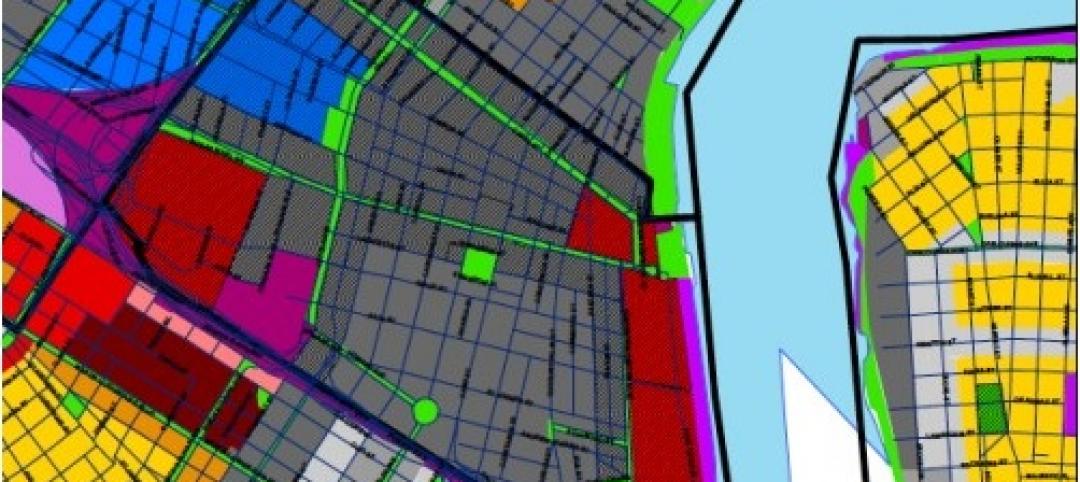Suffolk Construction announced that Plumosa School of the Arts has been awarded LEED Gold by the USGBC.
Plumosa, located in Delray Beach, is one of the first elementary schools in South Florida with a dedicated curriculum for the Arts. The project built for the School District of Palm Beach County, included the renovation and addition to the existing Atlantic High School campus. The new 92,000-sf 704-station elementary school included extensive modernization and preservation planning of the 640-seat auditorium.
During the project planning and design stages, the School District had mandated all projects moving forward would be required to apply for LEED Silver. Suffolk Construction, along with the design team of Tercilla Courtemanche Architects, reviewed the project and the traditional USGBC point system for opportunities to create sustainable strategies for the project. Some of the elements implemented included low-flow plumbing and motion light sensors throughout reducing water usage and creating energy savings.
Because the project was located on such a large site, the team chose specific indigenous plants and grasses in the landscape that didn’t require irrigation; thus saving water usage. Other areas that increased the project’s performance included that fact it was developed on a Brownfield site; which enabled the use of a site which in the past would have been overlooked. Through shared parking with the adjacent City of Delray Swimming Complex the Project Team minimized adding parking spaces which helps to reduce the island heat effect created from asphalted parking areas.
The project team determined they would ensure the use of regional materials for the project as well as taking advantage of programs such as Renewable Energy Credits and Certified Woods. As a method to prevent increasing wasted materials, the old asphalt that was demolished was re-used. During the demolition, instead of sending the crushed asphalt to the landfill, they worked with Waste Management to repurpose for base course to stabilize the new parking lots. +
Related Stories
| May 18, 2011
One of Delaware’s largest high schools seeks LEED for Schools designation
The $82 million, 280,000-sf Dover (Del.) High School will have capacity for 1,800 students and feature a 900-seat theater, a 2,500-seat gymnasium, and a 5,000-seat football stadium.
| May 18, 2011
Carnegie Hall vaults into the 21st century with a $200 million renovation
Historic Carnegie Hall in New York City is in the midst of a major $200 million renovation that will bring the building up to contemporary standards, increase educational and backstage space, and target LEED Silver.
| May 17, 2011
Redesigning, redefining the grocery shopping experience
The traditional 40,000- to 60,000-sf grocery store is disappearing and much of the change is happening in the city. Urban infill sites and mixed-use projects offer grocers a rare opportunity to repackage themselves into smaller, more efficient, and more convenient retail outlets. And the AEC community will have a hand in developing how these facilities will look and operate.
| May 17, 2011
Architecture billings index fell in April, hurt by tight financing for projects
The architecture billings index, a leading indicator of U.S. construction activity, fell in April, hurt by tight financing for projects. The architecture billings index fell 2.9 points last month to 47.6, a level that indicates declining demand for architecture services, according to the American Institute of Architects.
| May 17, 2011
Sustainability tops the syllabus at net-zero energy school in Texas
Texas-based firm Corgan designed the 152,200-sf Lady Bird Johnson Middle School in Irving, Texas, with the goal of creating the largest net-zero educational facility in the nation, and the first in the state. The facility is expected to use 50% less energy than a standard school.
| May 17, 2011
Gilbane partners with Steel Orca on ultra-green data center
Gilbane, along with Crabtree, Rohrbaugh & Associates, has been selected to partner with Steel Orca to design and build a 300,000-sf data center in Bucks County, Pa., that will be powered entirely through renewable energy sources--gas, solar, fuel cells, wind and geo-thermal. Completion is scheduled for 2013.
| May 17, 2011
Should Washington, D.C., allow taller buildings?
Suggestions are being made that Washington revise its restrictions on building heights. Architect Roger Lewis, who raised the topic in the Washington Post a few weeks ago, argues for a modest relaxation of the height limits, and thinks that concerns about ruining the city’s aesthetics are unfounded.
| May 17, 2011
The New Orleans master plan
At an afternoon panel during last week's AIA National Conference in New Orleans, Goody Clancy Principal David Dixon and Manning Principal W. Raymond Manning shared their experiences creating the New Orleans Master Plan, a document that sets a new course for the city, from land use and transportation planning to environmental protection.
| May 17, 2011
Do these buildings look like buffalo to you?
It’s hard to contemplate winter now that we’re mid-spring, but when the seasons change, ice skaters in Winnipeg will be able to keep warm in plywood shelters designed by Patkau Architects. The designers created temporary shelters inspired by animal behavior—specifically, buffalo bracing against the wind. Check them out.













